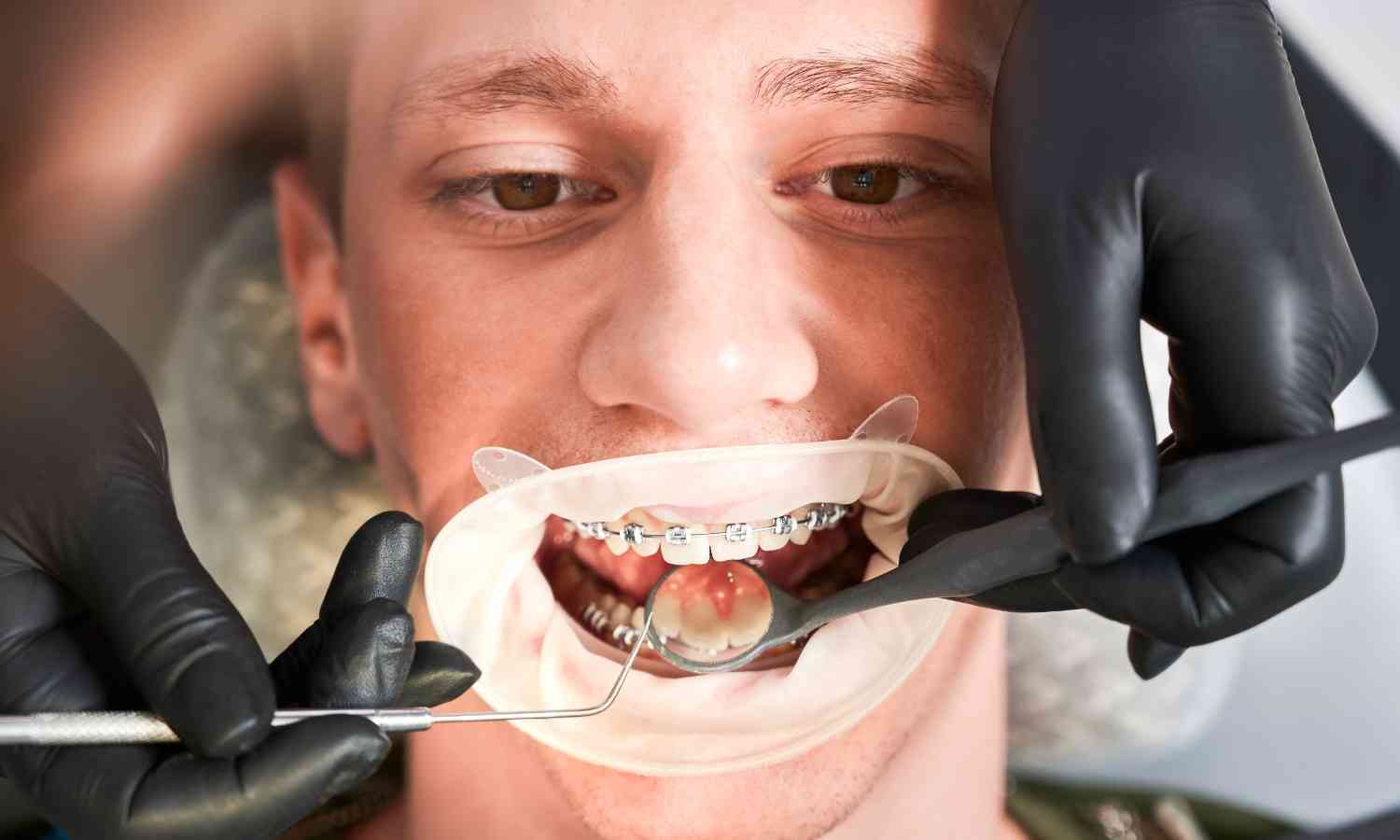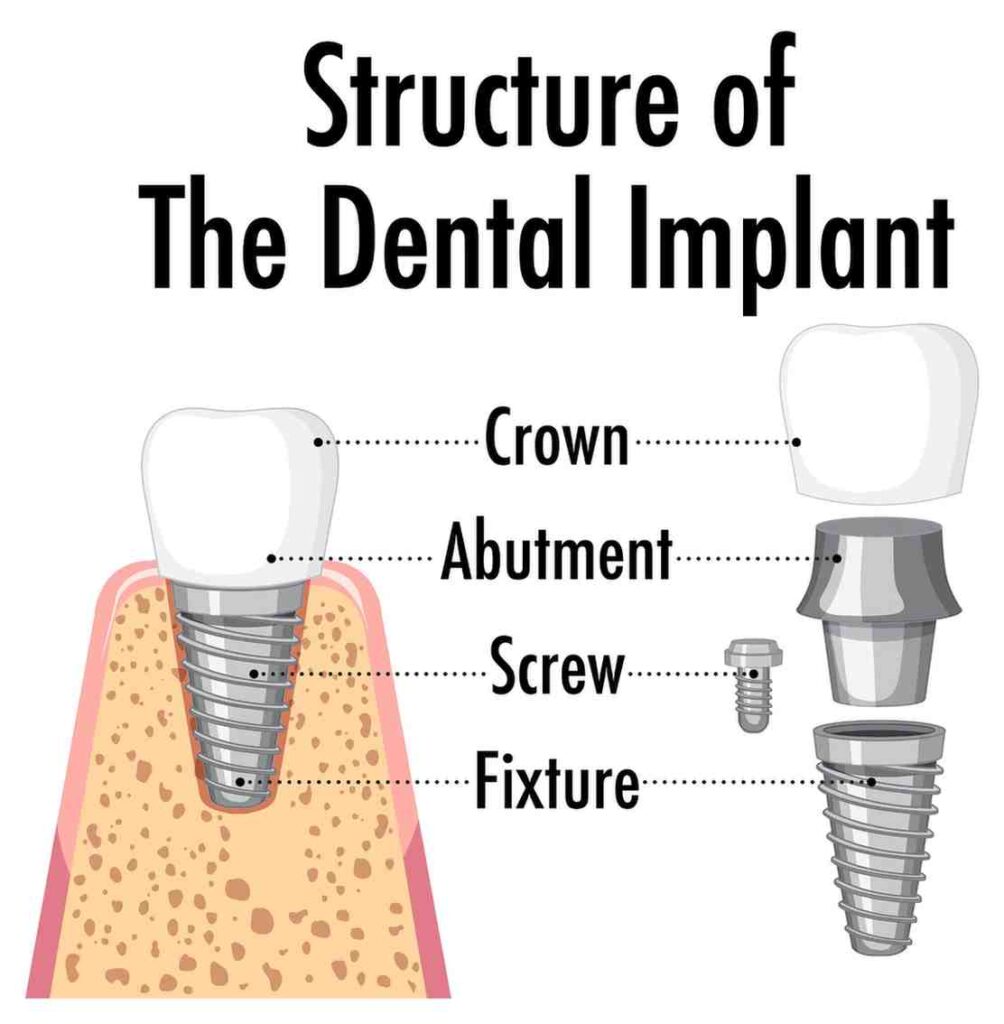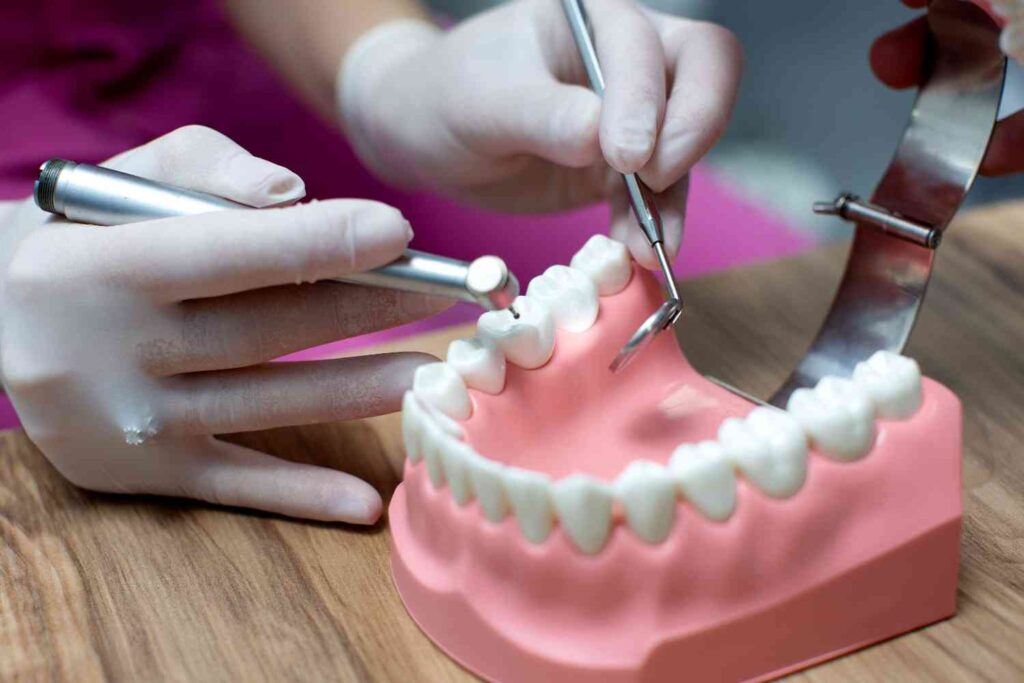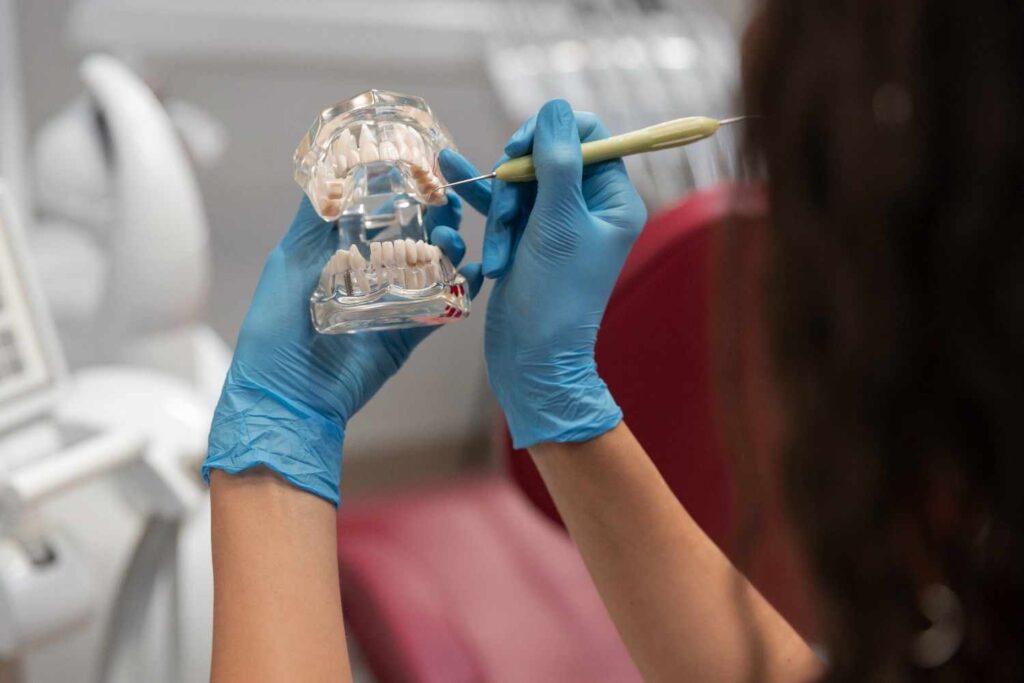Dental Implants on Front Teeth
With regards to supplanting wisdom teeth removal aftercare missing teeth, dental implants are the top decision since they keep going for quite a while and look regular. Around 5 million new embeds are placed in, showing how well they work. In any case, imagine a scenario in which you’re feeling the loss of a front tooth. Could dental implants at any point help?
In this article, we’ll discuss why dental implants are perfect for supplanting both front and back teeth. We’ll likewise examine how your dental specialist can check if you’re ideal for the method before you get it, so you can seek the best treatment for you.
What are Front Tooth Implants:
A front tooth embed resembles a phony tooth root. At the point when you lose a tooth, this medical procedure puts a metal post made of titanium into your jawbone where the tooth used to be. Over the long run, this post interfaces with your bone, making areas of strength for another tooth.
What’s exceptional about an embedded upheld tooth is that it’s anything but a phony tooth on top (called a crown). It likewise has a section that behaves like the base of a genuine tooth under your gums. This makes the substitution look genuine and work like a characteristic tooth.
Benefits of Dental Implants on Front Teeth
At the point when you want to supplant a missing front tooth, you generally have options like a dental scaffold or a halfway dental replacement, which certain individuals call a “flipper.” But dental inserts enjoy a ton of benefits that are superior to these customary choices:
- Protects Different Teeth: Dissimilar to spans that need close-by teeth to be changed with dental crowns, inserts don’t influence different teeth, so they stay regular and solid.
- Saves Your Jawbone: Inserts assist with keeping your jawbone solid by behaving like a genuine tooth root. This stops bone misfortune, which helps keep your face looking typical and prevents it from maturing.
- Replaces Everything: Inserts supplant both the root and the top piece of a missing tooth. This makes serious areas of strength for them allowing you to bite as you did with your normal tooth.
- Simple to Deal with: Inserts are easy to focus on with ordinary brushing, flossing, and dental specialist visits. Doing these things helps keep your inserts solid and enduring for quite a while.
- Helps Certainty: Since they look and feel normal, inserts help individuals have a positive outlook on themselves. They can eat, talk, and grin without agonizing over how their teeth look.
- Endures Quite a while: If you deal with them, inserts can remain in your mouth for what seems like forever, giving you a dependable tooth substitution.
- Keeps Your Mouth Sound: Inserts stop issues that can happen when you have missing teeth, as different teeth moving around, gums returning, and bone getting feeble.
- Assists You With Speaking Better: Inserts are steady, so they keep your discourse clear and ordinary. You will not need to stress over them moving or feeling awkward, as with false teeth.
- Agreeable and Simple: Dissimilar to false teeth you take out, inserts become pieces of your mouth, so you needn’t bother with glues and you won’t stress over them moving while you’re getting things done.
- More Food Decisions: Since inserts areas of strength for are, can eat loads of various food varieties without stressing. This implies you can have a superior eating regimen and remain better.
To summarize, dental inserts for front teeth have a lot of advantages that not make your mouth better and work better yet besides helping you have a positive outlook on yourself.
Determining Your Candidacy for Dental Implants on Front Teeth:
Before you get a dental embed to supplant a front tooth, your dental specialist needs to take a look at a couple of things to ensure everything works out in a good way.
Something significant they take a gander at is the amount of bone you have in your jaw where the embed will go. For the most part, there’s less bone around the front teeth contrasted with the back teeth, so it needs cautious checking.
To start with, your dental specialist will take photos of your jaw to perceive areas of strength for how bone is. On the off chance that there’s insufficient bone, they could propose a bone joint. This resembles adding more unresolved issues to the region more grounded and gives great help to the embed.
Your dental specialist will likewise get some information about your well-being history, how your teeth are, and your propensities. Things like smoking can make embeds less inclined to function. Individuals who don’t smoke for the most part have improved results with inserts.
Having sound gums is significant for the embed to recuperate right and remain set up. Your dental specialist will ensure your gums are looking great so they can uphold the embed and make it function.
Even though there are a ton of things to ponder, dental inserts are generally an extraordinary decision for individuals who need to supplant a front tooth. With cautious preparation and medicines made for you, inserts can give you a pleasant grin that stays smart for quite a while.
Explaining the Front Tooth Implant Timeline:
Getting a front tooth embedded is a wisdom teeth removal aftercare cycle that includes various moves to ensure it functions and endures for quite a while. This is the way it goes:
- Conversing with Your Dental Specialist: It begins with a talk with your dental specialist or oral specialist. They’ll take a gander at your teeth, look at your wellbeing history, and discuss what you need from the embed. They could likewise take X-beams or outputs to see what’s happening in your jaw.
- Making an Arrangement: In the wake of looking at you, they’ll make an arrangement that is for you. This plan will spread out what requirements to occur during the embed interaction. Once in a while, they could have to do extra things like bone uniting to ensure the embed site is enough.
- Taking Out the Tooth (if necessary): Assuming that the tooth you’re supplanting is still there, they could have to take it out first. You can relax, they’ll numb the region so you won’t feel a thing.
- Placing in the Embed: Next comes the huge step of placing the embed into your jawbone where the old tooth used to be. This embed, made of titanium, behaves like the base of your new tooth. They’ll numb the region for this as well, yet if you’re anxious, they could offer a better way of assisting you with unwinding.
- Recuperating Time: After the embed is in, your jawbone needs time to mend and work with the embed. This can take a couple of months. During this time, the embed gets quite secure in your jawbone, prepared for the following stage.
- Adding the Connector: When your jawbone and the embed are mates, they’ll join a little piece called a projection to the embed. This sticks out over your gums and is where the new tooth will interface.
- Putting on the New Tooth: At last, they’ll put the new tooth onto the projection. This could be a crown, scaffold, or dental replacement made for you. It’s intended to resemble your different teeth, so it mixes right in.
- Staying aware of checkups: After everything’s finished, you’ll have to continue to see your dental specialist to ensure your embed stays sound. Taking great consideration of it at home with brushing, flossing, and normal dental visits is significant as well.
Following these means and standing wisdom teeth removal aftercare by listening to your dental specialist’s recommendation can give you a front tooth embed that functions and keeps your grin sparkling for quite a while.
Healing Time of Front Tooth Implants:
The mending system in the wisdom teeth removal aftercare wake of getting a front tooth embed is significant for ensuring everything works out. Knowing what’s in store during this time can assist you with overcoming it.
Here’s what happens during the healing process:
- After Medical procedure: After the embedded medical procedure, blood coagulation structures around the area to safeguard it while it mends. Upsetting this coagulation by flushing too hard or contacting it with your fingers or tongue is significant.
- Bone Coordination: The embed needs to combine with your jawbone in a cycle called osseointegration. This makes the embed solid and secure. It as a rule takes around three to a half years, but it can shift contingent on your bone strength and well-being.
- Mending of Delicate Tissues: Not in the least does the bone need to recuperate, but, the gums and tissues around the embed additionally need time to change. Taking great consideration of your mouth with delicate brushing and utilizing mouthwash helps the tissues mend and forestall diseases.
- Check-Ups: Your dental specialist will need to keep an eye on how everything’s along during the recuperating time. They could use X-beams to perceive how well the embed is getting together with your bone.
- Transitory Tooth: Some of the time, you’ll get a brief tooth to cover the embed while it recuperates. This safeguards the region and keeps your grin looking great until you get the last tooth.
- Last Tooth: Whenever all that’s mended up and the embed is quite strong, it’s the ideal opportunity for the last tooth. This tooth is made to match your different teeth, so it looks normal and fits right in.
- Dealing with Your New Tooth: After you get the last tooth, it’s vital to take great consideration of it to keep it sound areas of strength for and. This implies brushing and flossing, going to your dental check-ups, and staying away from things like smoking or gnawing on hard stuff that could harm it.
By knowing what’s in wisdom teeth removal aftercare store during the mending system and heeding your dental specialist’s guidance, you can ensure your front tooth embed turns out great and gives you an extraordinary grin for quite a while.
Front Tooth Implant Before and After
Getting a dental embed to wisdom teeth removal aftercare supplant a missing front tooth can have a major effect on the way you look and feel. We should investigate what occurs when the embed treatment:
Before:
- Before you get a front tooth embed, you could confront a few difficulties. These can incorporate finding it hard to bite or talk, having high expectations about your grin, and agonizing over how your teeth look.
- While you’re feeling the loss of a front tooth, it can change how your face looks. Your face won’t look as adjusted, and your profile could change.
- Without a tooth in its place, different teeth around it could fire moving or not line up after some time.
- Different choices like scaffolds or false teeth won’t give you a similar strength, capability, or normal look as a dental embed.
After:
- When you have the front tooth embed set up, things begin to turn upward. You’ll find it more straightforward to bite and talk once more.
- The embed occupies the space where your missing tooth was, making your face look more adjusted and working on your profile.
- Having the embed additionally helps keep your different teeth set up, preventing them from moving around.
- Dental inserts are intended to look and work like normal teeth, so your grin will be consistent and regular looking.
- With your new grin, you’ll feel more confident and appreciate life more, realizing your grin is back and feeling as it did before.
- To summarize, getting a front tooth embed can change your grin and your life. There’s no need to focus on what you look like — it’s tied in with feeling certain and cheerful.
How Much 2 or 4 Front Teeth Implants Cost:
The cost of getting 2 or 4 front teeth inserts can change given various things. These things incorporate what every individual necessities, how hard the circumstances is, where they are, and how great the dental specialist is. This is what to think about while thinking about the amount it’ll cost:
- Number of Inserts: On the off chance that you want more embeds, it’ll cost more cash. Assuming you’re supplanting one tooth, you’ll need one embed. But, assuming you want to supplant more teeth, you could need at least two inserts.
- More Medicines: Once in a while, you could need different medicines before getting inserts. These could be things like adding more bone or fixing the sinus. These extra medicines can make the absolute expense higher.
- Kind of Substitution: There are various ways of supplanting missing teeth. You could get individual crowns for each embed, or you could need a scaffold or false teeth upheld by inserts. The materials and how confounded the substitution is can make the expense go up.
- Dental specialist’s Expenses: Dental specialists charge expenses for doing the embed a medical procedure and dealing with you a while later. A few dental specialists who are great at this could charge something else for their work.
- Where You Live: The expense of dental consideration can be different depending upon where you are. Generally, in urban communities or where it’s costly to live, dental consideration costs more than in country regions.
- Protection: Some dental protection plans help pay for part of the expense of inserts. Be that as it may, not all plans cover this, so it means a lot to check.
- Installment Plans: A few dental workplaces let you pay for inserts over the long haul. This can make it more straightforward to manage the cost of the treatment.
In this way, how much 2 or 4 front teeth inserts cost relies upon many things, like the number of you want, different medicines, sort of substitution, dental specialist expenses, where you are, protection, and installment plans. Chatting with a decent dental specialist can assist you with realizing the amount it’ll set you back.









3 thoughts on “Dental Implants on Front Teeth: Its Cost & Timelines”